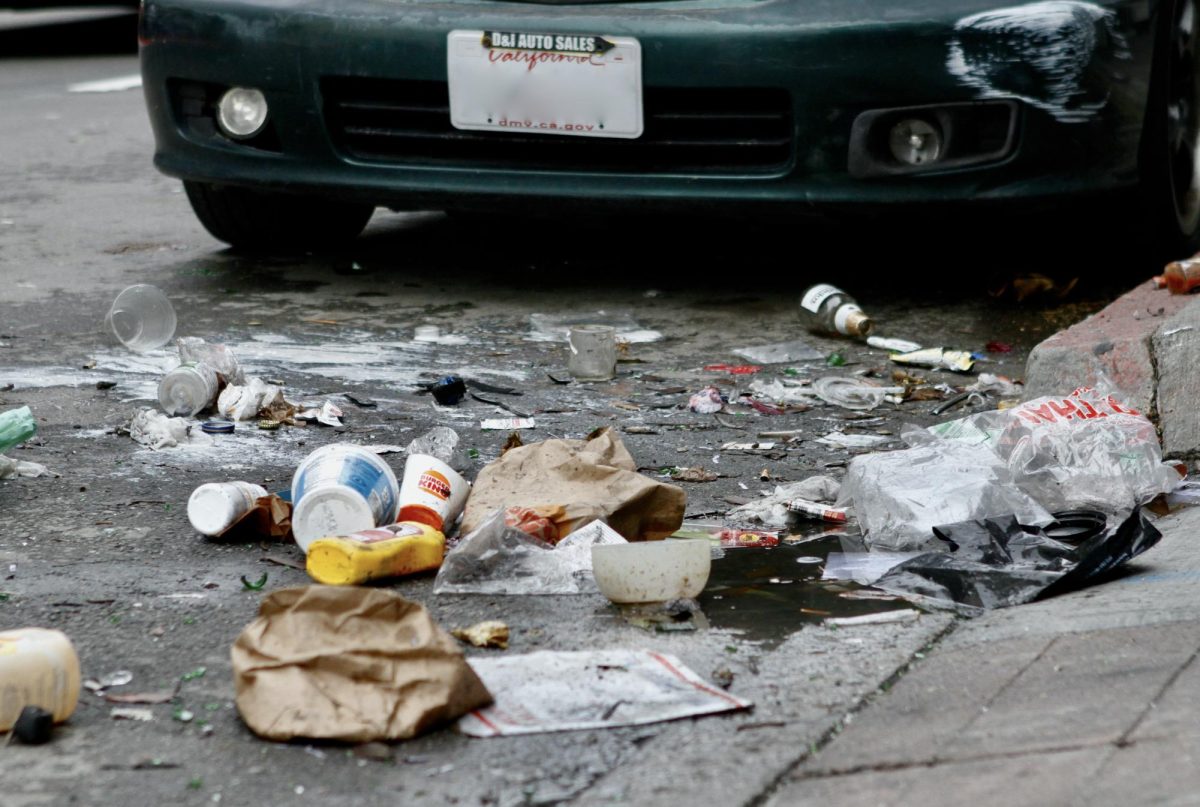A city with a rich and diverse history, San Francisco has its past painted on every Victorian house and street. With a lively population of 800,000 people, San Francisco’s streets and infrastructure maintain one of the largest economic and cultural powerhouses in the nation. Despite its diverse culture and initially welcoming appearances, many public areas have fallen into a state of disrepair.
How did we get here?
Neglected roads, dilapidated sidewalks, and the pervasive drug and homelessness crisis have slowly driven businesses away from the region, leaving its citizens disillusioned. As reported by CNN, “many well-known chains have announced exits from the area, including CB2, Anthropologie, and Nordstrom.”
It is evident that the city’s condition has only deteriorated over the years, reflecting its major issues with homelessness, drugs and sanitation enforcement.
The city’s widespread homelessness issue has been exacerbated by the high costs of living and the housing crisis. According to the C2ER Cost of Living Index, the cost of living is 76% higher than the national average. Combined with San Francisco’s slow housing development, many homeless people resort to creating makeshift shelters, thus generating additional trash that gets distributed across the city.
Ubiquitous drug use has also been a prevailing factor in the city’s unsanitary conditions, an issue that has only increased with the passing of Proposition 47 – which decriminalized drug possession and usage by reducing them to misdemeanors from felony charges. Although Prop 47 reduced the prison population, it also shifted the drug issue back onto the streets rather than limiting it through the system.
The reduced severity in charges is compounded by the decreasing levels of enforcement across the city. The San Francisco Chronicle reported that 17,000 warnings and citations were issued in 2019, but declined to just 6,600 in 2023. Although COVID-19 was a factor in this dramatic decline, it represents the shifting approach to law enforcement.
This lax law enforcement does little to deter drug users, as both dealers and users go through a revolving-door prison system, often being arrested and released in mere days. Jail time is not a threat, and as a result, drug users continue with their brash behavior and public drug usage. As a whole, the law means nothing to them because the law refuses to do anything against them.
The drug problem and revolving jail door can be addressed with a comprehensive approach to addiction management. Take Portugal, for instance. The New York Times reported that Portugal “invested in addiction treatment and created a system that tries to push people to seek help for addiction.”
Such a system could offer certain harm reduction options that slowly ease users into treatment. Policies such as government-provided addiction medications and dissuasion committees would be beneficial to the city. These committees could give motivational speeches, issuing the threat of penalties like community service or jail time to convince users that drugs are not worth the effort. A reduction in drug users means a reduction in unsanitary conditions within the city, where feces and needles haphazardly flood the streets.
Deterring illegal dumping is another crucial step in improving the city. As reported by the Chronicle, the city plans to “install 10 movable license plate reader cameras in known hot spots in the Bayview to try to catch trash scofflaws.” While it is a good step toward resolving the matter, it is not enough. Harsher punishments such as misdemeanor arrests or vehicle seizures are necessary to discourage future illegal dumping.
San Francisco must be restored to its former glory. Through addressing the homelessness crisis, implementing a system that encourages support to addicts and instituting crackdowns on illegal dumpers, San Francisco can become the city it once was: a golden city that prides itself on its thriving economy, happy citizens and rich culture.


